Tommaso Gherardini (December 21, 1715 - 1797) was an Italian painter, mainly of Rococo fresco decorations.


Tommaso Gherardini (December 21, 1715 - 1797) was an Italian painter, mainly of Rococo fresco decorations.


He was born in Florence, where he was a pupil of Vincenzo Meucci. He also traveled to Bologna and Venice to study at the respective academies. He painted a hall of the Gallery of the Uffizi and also in the Imperial palace of Vienna [1]
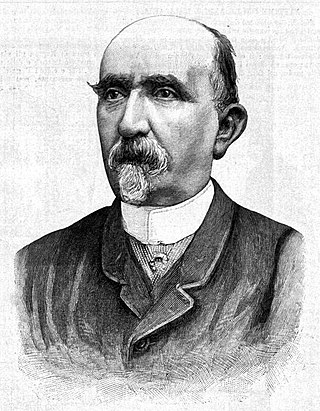
Carlo Lorenzini, better known by the pen name Carlo Collodi, was an Italian author, humourist, and journalist, widely known for his fairy tale novel The Adventures of Pinocchio.

Dante Alighieri, probably baptized Durante di Alighiero degli Alighieri and often referred to as Dante, was an Italian poet, writer and philosopher. His Divine Comedy, originally called Comedìa and later christened Divina by Giovanni Boccaccio, is widely considered one of the most important poems of the Middle Ages and the greatest literary work in the Italian language.

Florence is a city in Central Italy and the capital city of the Tuscany region. It is the most populated city in Tuscany, with 383,083 inhabitants in 2016, and over 1,520,000 in its metropolitan area.
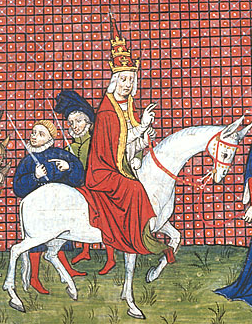
Pope Gregory XI was head of the Catholic Church from 30 December 1370 to his death in March 1378. He was the seventh and last Avignon pope and the most recent French pope recognized by the modern Catholic Church. In 1377, Gregory XI returned the Papal court to Rome, ending nearly 70 years of papal residency in Avignon, France. His death shortly after was followed by the Western Schism involving two Avignon-based antipopes.
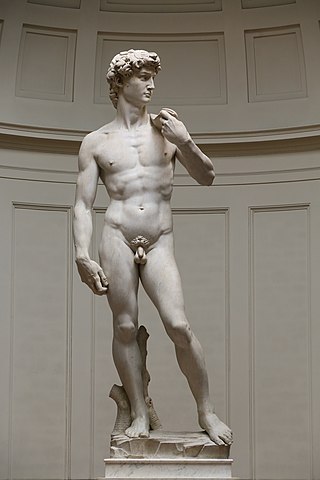
David is a masterpiece of Renaissance sculpture, created in marble between 1501 and 1504 by the Italian artist Michelangelo. David is a 5.17-metre marble statue of the Biblical figure David, a favoured subject in the art of Florence.

The House of Medici was an Italian banking family and political dynasty that first began to gather prominence under Cosimo de' Medici, in the Republic of Florence during the first half of the 15th century. The family originated in the Mugello region of Tuscany, and prospered gradually until it was able to fund the Medici Bank. This bank was the largest in Europe during the 15th century and facilitated the Medicis' rise to political power in Florence, although they officially remained citizens rather than monarchs until the 16th century.

Girolamo Savonarola, OP or Jerome Savonarola was an ascetic Italian Dominican friar from Ferrara and preacher active in Renaissance Florence. He was known for his prophecies of civic glory, the destruction of secular art and culture, and his calls for Christian renewal. He denounced clerical corruption, despotic rule, and the exploitation of the poor.

Donato di Niccolò di Betto Bardi, better known as Donatello, was a Florentine sculptor of the Renaissance period. Born in Florence, he studied classical sculpture and used this to develop a complete Renaissance style in sculpture. He spent time in other cities, and while there he worked on commissions and taught others; his periods in Rome, Padua, and Siena introduced to other parts of Italy his techniques, developed in the course of a long and productive career. Financed by Cosimo de' Medici, Donatello's David was the first freestanding nude male sculpture since antiquity.

Filippo Brunelleschi, considered to be a founding father of Renaissance architecture, was an Italian architect, designer, and sculptor, and is now recognized to be the first modern engineer, planner, and sole construction supervisor. In 1421, Brunelleschi became the first person to receive a patent in the Western world. He is most famous for designing the dome of the Florence Cathedral, a feat of engineering that had not been accomplished since antiquity, as well as the development of the mathematical technique of linear perspective in art which governed pictorial depictions of space until the late 19th century and influenced the rise of modern science. His accomplishments also include other architectural works, sculpture, mathematics, engineering, and ship design. His principal surviving works can be found in Florence.

Florence Nightingale was an English social reformer, statistician and the founder of modern nursing. Nightingale came to prominence while serving as a manager and trainer of nurses during the Crimean War, in which she organised care for wounded soldiers at Constantinople. She significantly reduced death rates by improving hygiene and living standards. Nightingale gave nursing a favourable reputation and became an icon of Victorian culture, especially in the persona of "The Lady with the Lamp" making rounds of wounded soldiers at night.
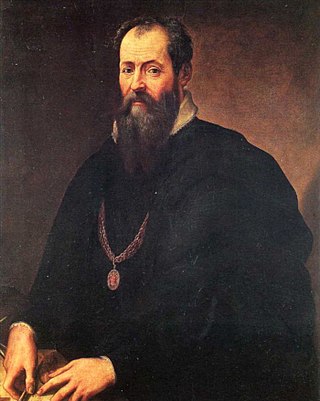
Giorgio Vasari was an Italian Renaissance Master, who worked as a painter, architect, engineer, writer, and historian, who is best known for his work The Lives of the Most Excellent Painters, Sculptors, and Architects, considered the ideological foundation of all art-historical writing, and the basis for biographies of several Renaissance artists, including Leonardo da Vinci and Michelangelo. Vasari designed the Tomb of Michelangelo in the Basilica of Santa Croce, Florence that was completed in 1578. Based on Vasari's text in print about Giotto's new manner of painting as a rinascita (rebirth), author Jules Michelet in his Histoire de France (1835) suggested adoption of Vasari's concept, using the term Renaissance to distinguish the cultural change. The term was adopted thereafter in historiography and still is in use today.
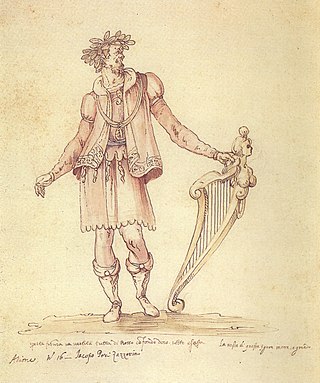
Jacopo Peri, known under the pseudonym Il Zazzerino, was an Italian composer and singer of the transitional period between the Renaissance and Baroque styles, and is often called the inventor of opera. He wrote the first work to be called an opera today, Dafne, and also the first opera to have survived to the present day, Euridice (1600).

Tyler Florence is a chef and television host of several Food Network shows. He graduated from the College of Culinary Arts at the Charleston, South Carolina, campus of Johnson & Wales University in 1991. He was later given an honorary doctorate from the university for his culinary success. He is the owner and executive chef of Wayfare Tavern in San Francisco.
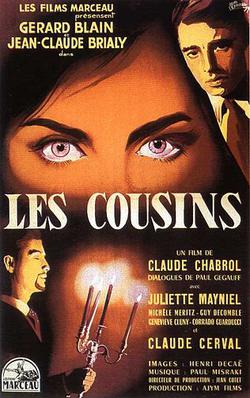
Les Cousins is a 1959 French New Wave drama film directed by Claude Chabrol. It tells a story about two cousins, the decadent Paul, played by Jean-Claude Brialy, and the naïve Charles, played by Gérard Blain. The film won the Golden Bear at the 9th Berlin International Film Festival.
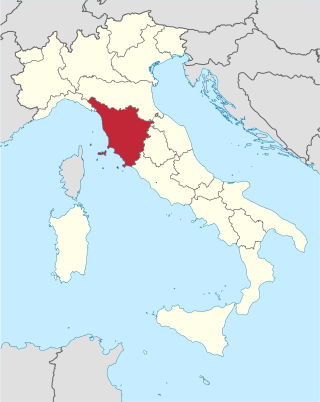
Tuscany is a region in central Italy with an area of about 23,000 square kilometres and a population of about 3.8 million inhabitants. The regional capital is Florence (Firenze).
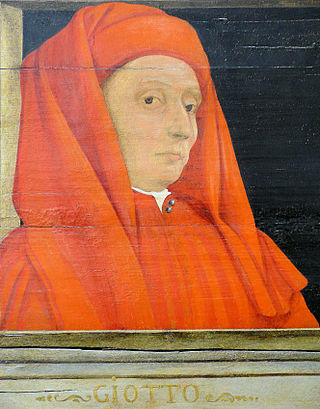
Giotto di Bondone, known mononymously as Giotto and Latinised as Giottus, was an Italian painter and architect from Florence during the Late Middle Ages. He worked during the Gothic/Proto-Renaissance period. Giotto's contemporary, the banker and chronicler Giovanni Villani, wrote that Giotto was "the most sovereign master of painting in his time, who drew all his figures and their postures according to nature" and of his publicly recognized "talent and excellence". Giorgio Vasari described Giotto as making a decisive break with the prevalent Byzantine style and as initiating "the great art of painting as we know it today, introducing the technique of drawing accurately from life, which had been neglected for more than two hundred years".
Renato Biasutti was a notable Italian geographer, who published many works on physical anthropology.
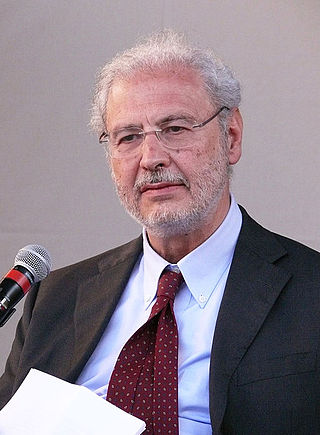
Carlo Trigilia is an Italian academic and politician, who served as minister for territorial cohesion from 28 April 2013 to February 2014. He is a professor emeritus in economic sociology at the University of Florence.

Medici is a historical drama television series created by Frank Spotnitz and Nicholas Meyer. The series was produced by Italian companies Lux Vide and Rai Fiction, in collaboration with Frank Spotnitz's Big Light Productions.

The Little Drummer Girl is a British television drama based on the 1983 novel of the same name by John le Carré and first aired on BBC One in the United Kingdom on 28 October 2018 and on AMC in the United States during November 2018.